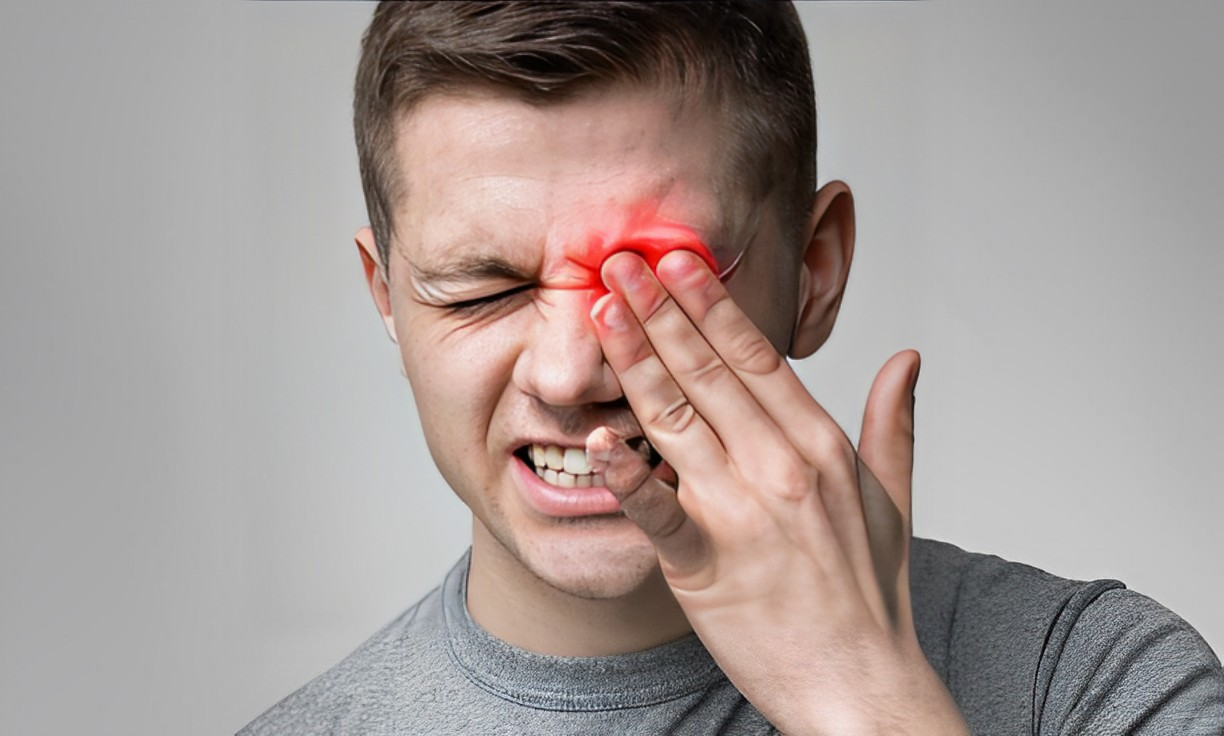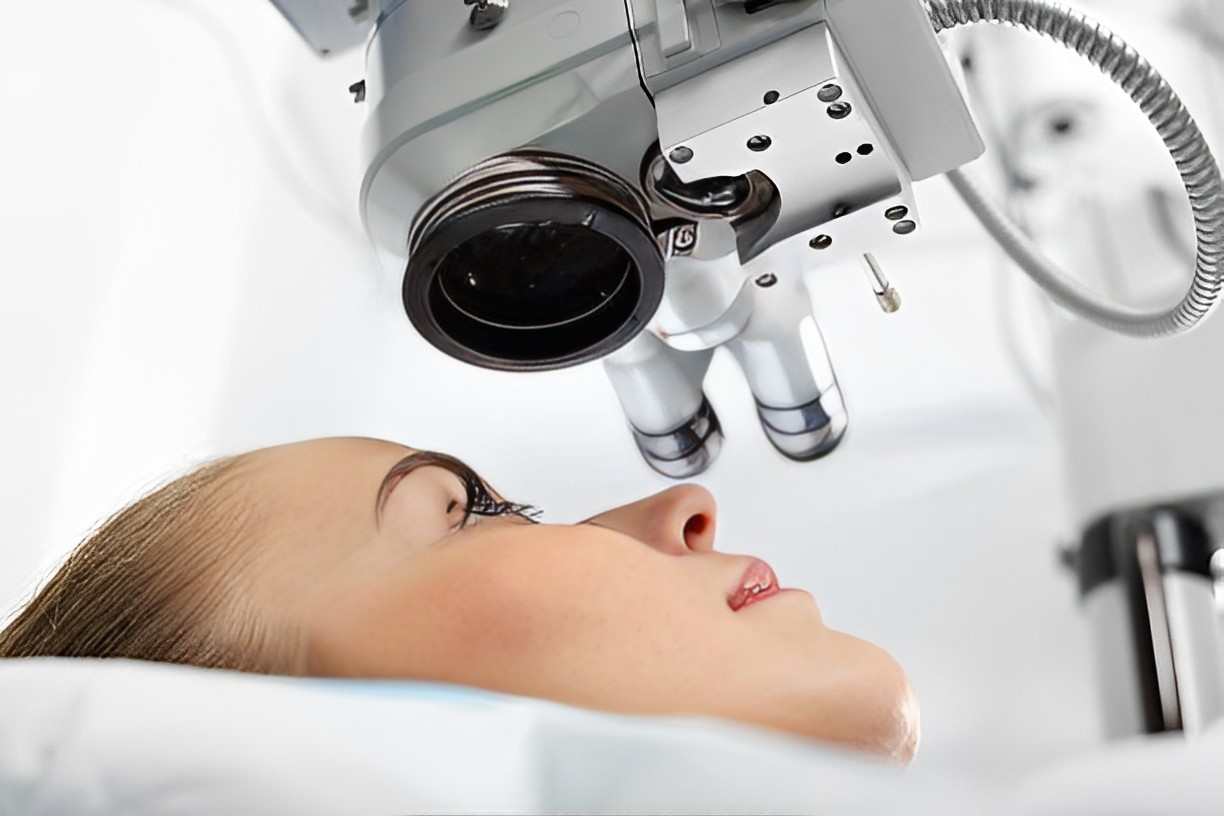Floppy eyelid syndrome (FES) is an eyelid disorder linked with obstructive sleep apnea syndrome. It is characterized by upper medial eyelid laxity and may contribute to persistent discomfort, tear production, and even ptosis. Age-related changes, excessive rubbing of the eyes, or an underlying medical condition may cause FES.
In addition to dry, itchy eyes, FES may also be related to sleep apnea. This sleep-disordered breathing causes many difficulties and heavy snoring. This blog will address the signs and symptoms of FES, its association with sleep apnea, and the startling correlation between floppy eyelids and sleep apnea identified in 53% of patients.
What Is Eyelid Floppy Syndrome?

Floppy eyelid syndrome (FES) is an underdiagnosed eye condition. Eye symptoms include inflammation and itching, particularly upon awakening.
The condition is characterized by loose, rubbery, and easily-flipping eyelids, such as when turning over in bed and the eyelid touches the pillow.
Who Is Prone To Floppy Eyelid Syndrome?
Similar to sleep apnea, it is more prevalent among obese middle-aged males. It is connected with keratoconus, which causes visual distortions such as ghosting, multiple images, glare, halos, impaired vision, and lash ptosis, in which the eyelashes point horizontally or downward from the eye.
What Relationship Does Floppy Eyelid Syndrome Have To Sleep Apnea?
In a 2010 research, 102 individuals with FES and another 102 patients served as controls. Ninety percent of those with FES also had obstructive sleep apnea.
In a 2012 study of 127 individuals suspected of having obstructive sleep apnea, 25.8% of those with OSA also had FES, whereas 40% of those with more severe OSA had FES. The researchers concluded that severe obstructive sleep apnea may be an independent risk factor for FES.
Researchers are still determining why. In addition to common risk factors (obesity, age), persons with obstructive sleep apnea may have increased tissue flexibility, influencing floppy eyelid ailment.
According to Dr. Brad Sutton, OD, FAAO of the Indiana University School of Optometry, the incidence of sleep apnea in individuals with floppy eyelid syndrome (FES) is almost one hundred percent. Dr. Sutton recommends his FES patients undergo sleep apnea testing.
Surprising Link To Floppy Eyelids Found In 53% Of Sleep Apnea Patients
In a research published in The Ocular Surface, Charles Bouchard, MD, and colleagues showed that 53 percent of sleep apnea patients had loose and rubbery upper eyelids. The connection between the most severe instances of sleep apnea and the most prominent occurrences of floppy eyelids was not statistically significant.
Obstructive sleep apnea (OSA) occurs when the upper airway frequently gets clogged, disrupting sleep. Symptoms include excessive daytime sleepiness, tiredness, and loud snoring. OSA affects 34% of men and 17% of women. Up to 80% of individuals afflicted have not yet been identified.
According to a survey published by the Harvard Medical School in 2010, moderate-to-severe sleep apnea was connected with $115 billion in healthcare expenses, behind cancer, diabetes, and coronary artery disease.
According to Dr. Bouchard, head of Loyola Medicine‘s department of ophthalmology, patients with slack, rubbery upper lid have one of three related conditions: lax eyelid condition (rubbery lids); lax eyelid syndrome (lax eyelids with conjunctivitis); and floppy eyelid syndrome (lax eyelid syndrome in obese young males).
In the Loyola research, 35 individuals suspected of having sleep apnea were assessed by Loyola sleep specialists. Overnight sleep studies confirmed that 32 of these patients had sleep apnea. Upon examination, ophthalmologists discovered that 17 of the 32 individuals with sleep apnea (53 percent) also had slack eyelids.
Related Article: Which CPAP Doctor Should I Talk To About My Sleep Apnea
How Is The Condition Of Floppy Eyes Treated?

FES is often misdiagnosed as eye discomfort and treated with eye drops before the correct diagnosis. However, determining whether the patient has sleep apnea and treating it is the best action since this will likely improve the FES.
Dr. Sutton’s therapy strategy has three components:
- Nighttime application of a heavy lubricating ointment.
- The use of a cylindrical pillow to limit contact between the eye and the pillow when sleeping.
- A tight sleep mask or eyelid tape may prevent eversion (flipping).
If these therapies are unsuccessful, eyelid tightening surgery may be necessary.
Sleep Apnea Symptoms
Frequent apnea and hypopnea occurrences may result in systemic and pulmonary hypertension and, eventually, congestive cardiomyopathy. A sleep expert must treat patients to avoid these potentially catastrophic disorders.
You should be aware of five more signs and symptoms of sleep apnea, which are listed below.
Snoring
One of the most usual signs of sleep apnea is prolonged and loud snoring. The vibrations in the upper portion of the respiratory tract cause snoring. When there is an impediment or blockage in this region, snoring occurs.
However, sleep apnea is not always present in everyone who snores. Sleep apnea might be caused by loud and obstructive snoring and stopping you and others from sleeping soundly.
Daytime Sleepiness
A proportion of sleep apnea sufferers experience daytime tiredness, which might be attributed to nighttime sleep disturbances. Due to their severe drowsiness, some individuals may fall asleep throughout the day. This might be dangerous since patients are prone to falling asleep when driving or using equipment, which can lead to terrible accidents.
Waking Up With Headaches
Patients with sleep apnea often suffer headaches upon awakening. When you stop breathing during sleep, oxygen levels in your blood and brain decrease. This causes blood vessel dilation and vascular headaches. Patients often experience daytime sleepiness and chronic weariness because they are unaware that they cease breathing throughout the day.
Irritation, Mood Swings And Depression
A person’s disposition might be negatively impacted by poor sleep quality. Frequent mood swings and depressive episodes are likely to occur. Long-term inability to sleep soundly may cause anxiety, anger, and depression.
Night Waking And Gasping
Patients with severe sleep apnea sometimes awaken, coughing and gasping for breath. This is because your airway is clogged, preventing restful sleep. This disorder may be highly terrifying for people.
Related Article: How Do I Get A CPAP Sleep Study?
Conclusion
Understanding the link between floppy eyelid syndrome (FES) and obstructive sleep apnea (OSA) emphasizes the importance of an integrated approach to treatment. Addressing sleep apnea can significantly improve FES symptoms, improving patient well-being. Prompt and comprehensive management of these interconnected conditions is essential for preventing further complications and enhancing overall health outcomes.




